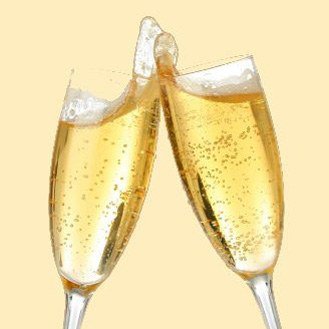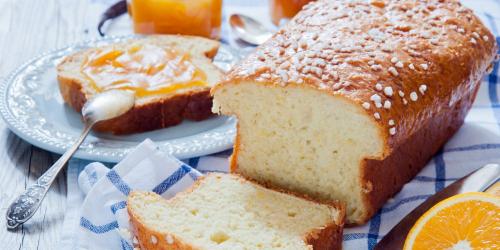Preparations for the end of year festivities accelerate just a few days before D-Day. After having determined the Christmas menu, it's time to think about making your choice of Champagne . Faced with the important offer of wine shops or supermarkets, it is easy to get lost.
This wine sublime is produced on 35,000 hectares around Reims , Epernay , Chateau-Thierry and Bar-sur-Aube . The production limits have been set since 1927 on 324 wine villages called " raw ". And that's all. The rest is a pale imitation that does not deserve the name champagne . Even if, in some big surfaces, they are proposed at the same radius.
Here are the tips of the Interprofessional Champagne Wine Committee to make its selection.
1st step before rushing without thinking to the cash register, decrypt the labels of Champagne . These are a source of essential information when choosing a champagne. They indicate the Appellation of Champagne, the brand or the name of the producer, the dosage and the particularities of alcohol, such as Blanc de Blancs, rosés ...
No need oenologist to succeed in choosing the right champagne for its menu, just master the few essential terms in the jargon "champagne", namely "Brut", "Semi-dry", "Grape".
- Vintage. Minimum aging: 3 years. This champagne is prepared with wines from one and the same year, considered exceptional. Good years: 1988, 1989, 1990, 1996, 1997. For special occasions and connoisseurs!
- Special vintage. Champagne vintage or not, assembled with the most subtle and refined wines. Perfect to start a meal, an evening. For enlightened amateurs.
- Gross. Minimum aging: 15 months. This is the "classic" champagne, prepared with wines of different years from the 3 authorized varieties. Ideal for drinking with friends or during the meal with a seafood platter for example.
- Half dry. It is distinguished from the crude by a slightly sweeter flavor. Sweet and relaxing. It is perfect in digestive with or after dessert.
- Pink. Its subtle color and flavor distinguish it from other champagnes. Its mode of elaboration gives it this particular hue. Subtle and rather feminine. Irresistible to sparkle a romantic meal if only for
2. Determine the type of Champagne sought
Consumers who want to drink champagne with flavors of spices, truffles with the scent of fresh butter and blond tobacco must choose a "body champagne" .
To choose the best Champagne, it is important to know the grape varieties of this exceptional drink:
- Pinot noir . Black grape, it gives a white juice and brings body and power to champagne.
- Pinot miller . Black grape, softer and rounder, it gives smoothness and flexibility.
- Chardonnay . White grape, all the floral and subtle notes come from this white grape.
For aromas of rose, honey and peach, it is better to opt for a rosé champagne and some semi-dry . The detail to pay attention for those who like or hate the wines of character: ripening . The older a champagne, the more it will be "strong" .
Moreover, the years of maturation give birth to different flavors. A champagne called "young", that is to say from 15 months to 3 years of aging , will reveal tastes of white flowers, citrus fruits and fresh fruits. The so-called mature champagnes - from 3 to 5 years of aging , have flavors of ripe and candied fruit aromas. The so-called fullness champagne wines, whose maturation takes at least 5 years , express flavors of dried flowers and toasty aromas.
3. Pay attention to the champagne dress
The character of a champagne can be read in the color of her dress . The clearer the color, the lighter the champagne will be . A champagne with amber color, old gold or gray gold will prove to be more powerful. As for rosés, the CIVC specifies that the "pleasure of the rosé is aesthetic and psychological". However, the rule of the shade of champagne also prevails for rosé alcohols.
Fans of fine champagnes will also be able to appreciate the Blanc de Blancs crus, which refers to alcohols produced only with the white grapes of one of the three grape varieties in Champagne, the Chardonnay. A Blanc de noirs is only produced with the grapes of pinot noir and / or pinot meunier. This type of champagne will be more fruity and "powerful".
4. Knowing if we prefer sweet or unsweetened Champagnes
Sweet or not? A must-ask question before buying your champagne, in which case consumers are more likely to draw a face during the tasting. Those who prefer sweet alcohols should opt for the semi-dry . Conversely, people who are more likely to like the salty taste will be more tempted by raw champagnes .
It is necessary in fact to know if one wants to drink a very pronounced champagne in sugar. These are the sweet champagnes that contain the most sugar (more than 50 grams) . Then come the champagnes half dry and dry. At this stage of the "sweet" scale, extra-dry is suitable for low-sugar alcohols, as are extra-raw champagnes.
5. Determine the meal menu in advance
The choice of champagne must be made according to the menu . A "powerful" champagne will be suitable for game meats . The rosé champagne goes well with crustaceans like lobster. Blanc de Blancs often accompanies a tasting of oysters or a foie gras . Champagnes that have long aged in the cellar are suitable for caviar and truffles .
At what temperature to serve Champagne?
Between 8 and 10 ° C, not less. The champagne is drunk cool, never frozen. Give up the idea of the freezer. Place the 4-hour bottle in the bottom of the refrigerator, that's enough.
In which glass to serve Champagne?
The glass " Tulip " with very thin edges is ideal. The flute would therefore have a preference for cutting.
Pour the champagne on the walls of the glass and fill it halfway. Smell, then enjoy while keeping the champagne in your mouth moments.
It remains to know, after making his choice, how much champagne to buy. Here is a recap of champagne bottles.
Quarter | 20 cl |
Demie | 37.5 cl |
Bottle | 75 cl |
Magnum | 2 bottles (1.5 liters) |
Jeroboam | 4 bottles (3 liters) |
Methuselah | 8 bottles (6 liters) |
Shalmaneser | 12 bottles (9 liters) |
Balthazar | 16 bottles (12 liters) |
Nebuchadnezzar | 20 bottles (15 liters) |
Website: www.champagne.fr


